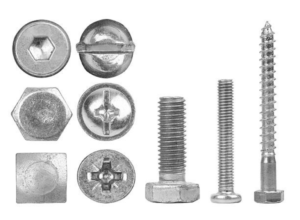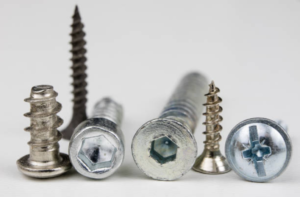Types of bolt and screw heads
Anyone who is familiar with fasteners can tell you that there are almost unlimited options available. For each fastener type, there are many different shapes, sizes and materials that can be customized based on your unique needs. So, in this blog post, we’ll take a look at some of the most common types of bolt and screw heads and their uses.
Common Types

Pan Heads
These are one of the most popular head types on the market. They’re characterized by a large surface area that allows slotted or flat drivers to easily grip and exert force onto the head. They’re typically recommended for new designs to replace round, truss, or binding heads.
Round Heads
A few decades ago, this type of head was the most universally used design. However, it has largely been replaced by pan heads for most applications. For this reason, round heads are not recommended for new designs.
Fillister Heads
Fillister heads have a smaller diameter than round heads. This means that they’re able to apply more pressure to surfaces. Along with the smaller diameter, they also have deeper slots. Fillister heads can be assembled close to flanges and raised surfaces.
Truss Heads
Also known as oven, stove or oval binding heads, truss heads are low, rounded, and extra wide. This type of head can cover large diameter sheet metal holes when additional play in assembly tolerance is necessary.
One-Way Heads
As the name indicates, one-way heads can only be installed one way. This means that once the fastener is driven into a surface, it cannot be removed. Tamper-proof heads allow businesses to eliminate costly assembly problems.

Related question
What is the difference between a bolt head and a screw head?
A bolt is meant to be used with a nut, and it is tightened by torquing the nut. A screw is designed to be used in either a preformed or threaded hole, or it is capable of forming its own threaded hole. A screw is designed to be tightened by torquing the head. RELATED: Need a specialty bolt, screw, or stud?